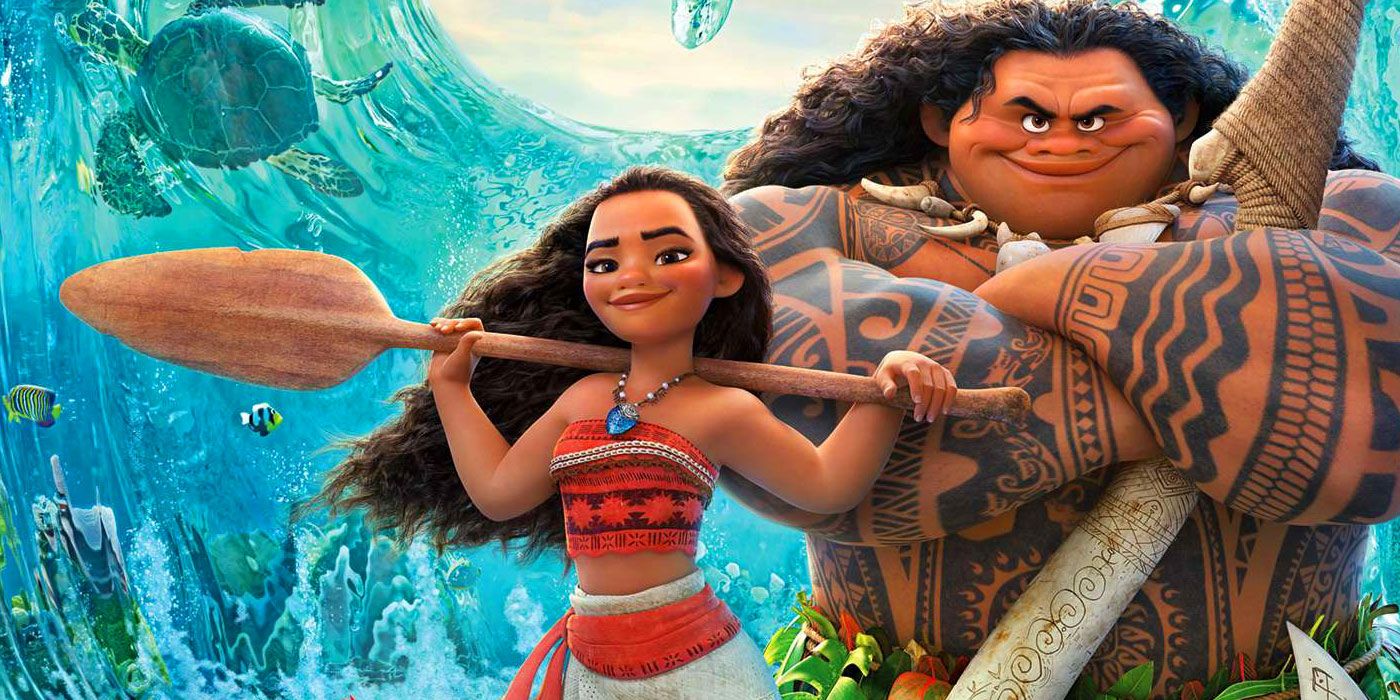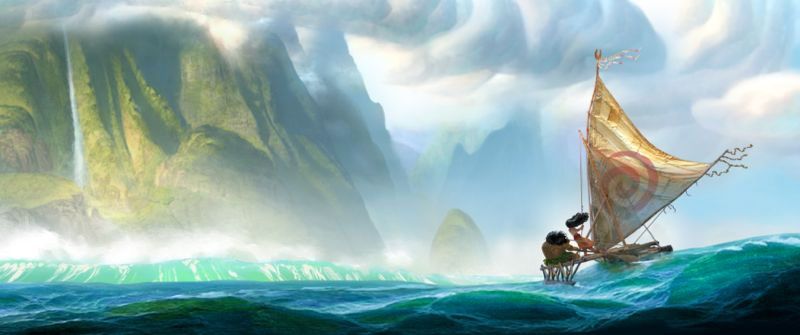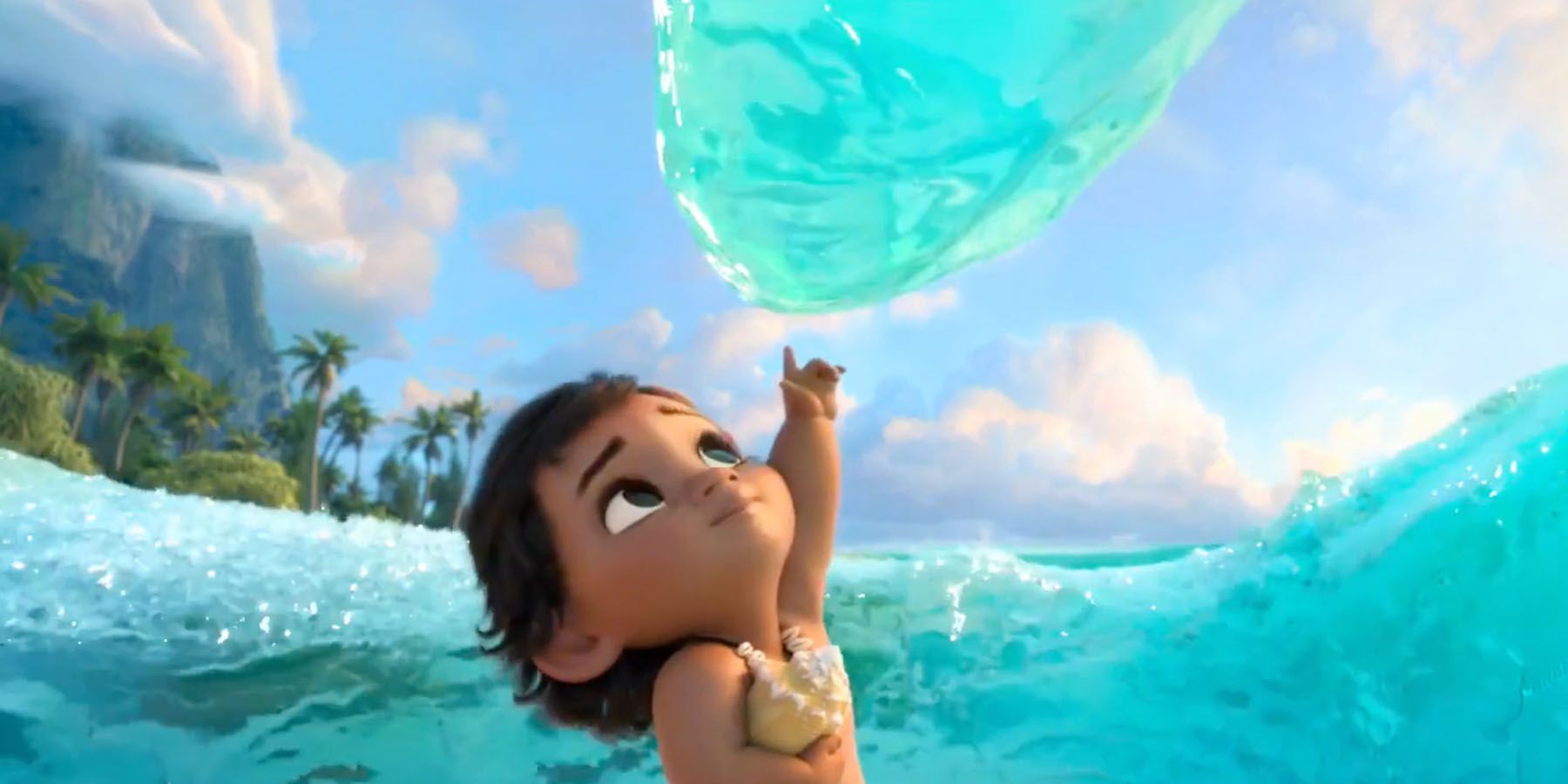Talk to the crew behind Disney's "Moana," and you'll hear the same words over and over again: "The Ocean is alive. You must speak gently to it."
That's a quote originally attributed to an old Fijian navigator, but it also became a guiding principle for directors Ron Clements and John Musker and the rest of the "Moana" team. "Moana" tells the story of a young girl who teams up with a demigod named Maui and sails throughout the South Pacific, trying to discover why her people -- originally some of the most accomplished navigators in the world -- suddenly stopped sailing. Accordingly, the ocean is a major part of the movie. In fact, aside from Moana herself, it's the only character that's in practically every scene.
And, true to the old Fijian's words, the ocean in "Moana "has its own character and its own personality. While conducting research for "Moana," Clements, Musker, and other Disney creatives visited Fiji, Samoa, Tahiti, Bora Bora, and other Pacific Islands. There, they consulted with a variety of different people (some of whom joined "Moana's" Oceanic Story Trust, a group charged with keeping "Moana's" depiction of Polynesian culture authentic) about both the islands' culture and its people's relationships with the sea.
RELATED: How Moana Preserves Disney’s Tradition of Hand-Drawn Animation
The "Moana" team came away from those meetings with the understanding that people in South Pacific see the ocean, as temperamental and destructive as it can be, as a force for good. The sea doesn't divide the Pacific Islands; it unites them.
But how did Disney's animators capture that sentiment in the final film? After all, even on a purely technical level, water is notoriously difficult to get right on computer-based systems -- and" Moana" has lots and lots of water. Hank Driskill, one of "Moana's "technical supervisors, claims that because of the prevalence of water, about 80% of the shots in "Moana" have some kind of special effect (that's compared to 46% for Disney's superhero action-comedy "Big Hero Six").
"Moana's "special effects team started by consulting their Walt Disney Company peers, Industrial Light and Magic and Pixar, about how those studios animated water, and then decided to push things even further in what Driskill calls a game of playful one-upmanship.
The end result is a new water simulation system that Disney calls Splash. On the whole, Driskill says, ocean patterns are fairly well understood, and large, undisturbed planes of water can be easily handled by mathematical equations. It's when the ocean has to interact with foreign objects -- Maui and Moana's boat, for example -- things become more difficult, and that's where Splash comes in.
"The ocean just has to look right," Driskill says. "If there are missing pieces or something doesn't look right, it draws your eye and pulls you out of the movie." By automating the basic water dynamics, Disney's team could spend less time worrying about the background, and more time telling "Moana's "story.
Getting the lighting right was also crucial for bringing the South Pacific to life -- after all, while it might all be water, the ocean can be very different colors in different parts of the world. While on one of the team's research trips, Andy Harnkess, the art director in charge of "Moana's "environment and color, observed that the South Pacific is naturally an "intense blue, almost fluorescent." For director of photography Adolph Lusinksy, that meant darkening the ocean's natural blues, then punctuating the surface with yellow and green sunlight, creating a "heightened sense of the water you see."
That all makes the water look right, but it still doesn't give the sea much character -- that job falls to Disney's animators. In order to give "Moana's" animation team greater control over exactly how the water behaves, "Moana's" special effects team created a number of basic effects -- splashes, sprays, spouts, etc. -- that layout artists could place as needed while constructing a scene. Originally, these "foundational effects" were just placeholders, indicating effects that the special effects team would go in and flesh out later. However, as the system evolved, the effects grew more complex, and a number of them remain, unaltered, in the final film.
That still wasn't enough. In order to really convey the ocean's personality, the special effects team created a poseable model -- similar to those created for Moana, Maui, or the film's other human characters -- that allowed staff to animate bodies water just like any other character. Once the basic animation was finished, the effects team took over again, adding splashes and bubbles to bring the motion to life, then integrating it with the larger ocean simulation.
The results can be seen in one of "Moana's" first trailers, which shows baby Moana meeting the sea for the first time. After beckoning to Moana on the beach, the ocean lures Moana closer, tussles her hair, cradles her in the waves, and ultimately waving goodbye. In one scene, Disney's animators turn the ocean from a force of nature into a playful, warm, and caring character -- and one that, despite appearances, is very much alive.
Directed by Ron Clements and John Musker and starring Auli’i Carvalho and Dwayne Johnson, “Moana” also features the voice talents of Alan Tudyk, Jemaine Clement, Nicole Scherzinger and Temuera Morrison and original music by Lin-Manuel Miranda. It arrives in theaters on November 23.



